I funded the kickstarter, still waiting for my lovely print book, but you can get PDF now, and I assume print-on-demand (POD) will come eventually.
S&W was one of the first "Old-School Renaissance" games. Matt Finch had worked on OSRIC (an AD&D-like retro-clone) in 2006, and took that and applied it to the original game.
I'm going to review the new book by looking at three (plus a bit) editions over time.
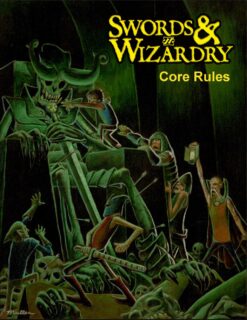
Swords & Wizardry Core in 2008, had most of OD&D (Original D&D, 1974) and fragments of Greyhawk (Supplement I, 1975):
- Stats ("Ability Scores"): Uses the "modern" order of STR, DEX, CON, INT, WIS, CHA (instead of SIWDCCh), but rolls 3d6 for each. Like OD&D, bonuses are only -1 to +1. INT has reduced extra languages, which I prefer to replace with
CHA-10languages. Has a bizarre new EP bonus system, where WIS, CHA, and class Prime give +5% each, no penalties for low stats. M-U with INT 15+, and Clerics with WIS 15+, get an extra 1st-Level spell. -
Classes: Only Fighter, Cleric, Magic-User, and a few non-Human species ("Race", as was the fashion at the time): Dwarf (with their own class table), Elf (with their own class table), Halfling (barely defined, Fighter up to 4th-Level). Fighter has a base save 14, everyone else has 15, Dwarfs only get +4 save against magic; in OD&D they get +4 levels against all saves (which varies from +2 to +4 bonus depending on level).
-
Combat: Mostly OD&D-like, but opinionated because there are not clear procedures in the original. For both legal and modernization reasons, it changed Armor Class from descending 9 (unprotected) down to 2 (plate+shield), to combination ascending,
9[10](unprotected) to2[17](plate+shield); saving throws went from five different numbers for Death, Wands, Petrify, Dragon Breath, Spells & Staves, to a single target number, with bonuses for some classes and species.Turn Undead is a new table, based on the D20 SRD, using a d20 chance to turn all of the same type. It's pretty generous, and makes Clerics OP against Undead and Demons!
You know what's hilarious? There's no rules for falling, fire, or disease. Some monsters list damage for poisons, others it does death. How is Neutralize Poison useful? It's unknown.
-
High-Level Adventuring: Followers, mass combat, spell research, all very brief.
-
Magic: Almost all of the OD&D + Greyhawk + some later spells. Notably, Magic Missile has both variants, auto-hit for d4+1 damage, or to-hit as a +1 arrow.
-
Referee: How to design a dungeon, very light. Two sample maps, side-layout lines, and small dungeon. Random dungeon & a couple terrain-specifc encounter tables, but no overall wilderness encounter table.
-
Monsters: Most of the OD&D monsters, but not the under-defined "Maybe dinosaurs, giant bugs, robots, Martian Thoats" entry. As in later games, but contradicting OD&D, Skeletons are 1 HD not 1/2 HD, Zombies are 2 HD, not 1 HD. There's only 2 Demons, Lemures & Balrog ("Baalroch"). Dragons are Black, Blue, Gold, Green, Red, White, Turtle.
Officially it uses d8 hit dice. OD&D was unclear, Holmes and later specify d8 hit dice, but I continue to use d6 for all except very tough monsters (Dragons x3 HP, Demons, Elementals, Giants get larger HD by type).
-
Treasure: Core through Complete (unrevised) used a system of giving GP = 2-3x monster XP, with trade-outs that almost never (5%) generated magic items. The item lists are minimal compared even to OD&D, intelligent magic swords almost never happen (1/1440 of major treasures!) and only have a 10% chance of spell-casting.
Core's fine for a quick and very minimalist game, and has higher-Level options almost all other retro-clones ignore, but you need to add a lot to finish it.
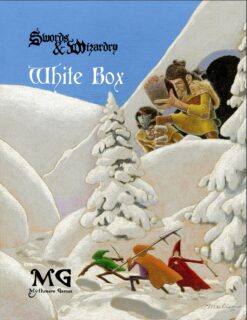
Offshoot: There's also a White Box variant, cutting out even more of that material, and later another publisher made White Box Fantastic Medieval Adventure Game (FMAG), which is more variant, adds Thieves, and limited to 10th-Level (12 for M-U), but it's very compact, a good pick-up game system; while apparently some people have run long games with FMAG, you'd do better with Core/Complete/Revised.
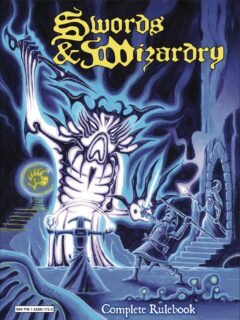
Swords & Wizardry Complete in 2010, was a major upgrade. Where I don't mention, it was the same as Core, but often expanded and rewritten for clarity. Boxes sometimes explain the rationale for rules, which at least helps you write house rules to change them!
- Stats: Adds more of the Greyhawk tables, increasing power of STR but doesn't add the 18/d100 mechanic so that's… overpowered but not the worst. INT removes the M-U bonus spell, and adds a bunch of stupid spell choice mechanics. I hate the INT table, so much. I give M-U Detect Magic, Read Magic, 2 spells of choice, +1 spell for INT 15+. Done. Never make spell gain rolls. WTF Gary Gygax, let's not perpetuate this.
-
Classes: All the classes of the OD&D supplements, Ranger (stupidly overpowered) from The Strategic Review/Dragon, but not Bard, Illusionist, or Barbarian. Stat minumums for the "better" classes are an optional rule, but listed. Non-Humans are standard classes or multiclass, and Half-Elves are added. "Halflings" are still garbage. Multi-classing is explained clearly, tho not necessarily the way I like. But it's A system.
The Cleric spells/day table changed, more like OD&D, but I think this is a design error. In Core, 5th is 2/2/1, 6th is 2/2/1/1, Complete jumps from 5th is 2/2 to 6th is 2/2/1/1; inexplicably gives 2 spell levels at once.
-
Alignment: Defined as a juvenile, He-Man, Law-good, Chaos-bad thing. I reject this, I'm more Moorcockian where everyone is bad except maybe Balance (and, you know, not everyone likes my Captain Planet "replace Humans with trees" definition of good).
-
Combat: Has an alternate version of the OD&D saving throws, tho they're not integrated into the rules. If you do want to use these, understand that the deadliest, most environmental things are easiest to save against, mere inconveniences are harder, directed effects are hardest. You can read hardest to easiest if you're a bastard DM, easiest to hardest if you're tolerant.
There remain no rules for falling, disease, and minimal for fire and poison. Starting fires is listed under Lamp Oil (which is ridiculous, lamp oil is not napalm or Greek Fire). The use of poisons is barely touched on in Assassins, but not their effects.
Surprise is completely rewritten and expanded, and includes a hard-to-read monster reaction roll.
Initiative rewrites the Core mechanic, and then presents two alternate systems: Holmes-like DEX rank (which is what I use), and Eldritch Wizardry activity points. All 3 systems are still using a 1-minute round which isn't clear in OD&D, contrary to Holmes and B/X which are 10-second, I use the 10-second round (and 100-second combat turn) from Holmes.
Turning undead uses almost the same table (slightly harder at Level 9+), but changes from d20 to 2d10, and turns only 2d6 Undead (no Demons), so now high-powered Undead are up to 10x harder to turn.
-
High-Level Adventuring: Followers, strongholds. Research is moved to Magic, rest is moved to Referee.
-
Magic: Same spell list, with minor changes.
-
Referee: All-new dungeon examples, an evocative side-view cross-section, a much better detailed dungeon, and a sketchy part of Rappan Athuk with no key, but good design. Better dungeon encounter tables (from 6 to 10 options) and adds a very good, detailed wilderness encounter system. Mass warfare, siege warfare, aerial combat, ship combat are all fleshed out and quite usable; tho in practice I've always used the GAZ4 Kingdom of Ierendi larger-scale naval system.
-
Monsters: Adds many classic monsters:
- Bulette (ludicrously lists Tim Kask's pr. "boo-LAY", when French pr. would be "bu-let")
- Crocodiles
- Demons (13, from Manes to Orcus)
- Clay Golem
- Leech (which drain a life level like undead!)
- Naga
- Rakshasa
- Fish, Octopus, Squid, Sea Monsters (adds a 30 HD variant! Screw you! Never get on a boat! Never go in the water!)
- Shambling Mound
- Shrieker, Lurker, Piercer, Slithering Tracker, Trapper (screw you to dungeoneers)
- Yeti
- Treasure: A few more items, swords are now intelligent more often, but there's no real mechanics for this. Adds cursed scrolls.
I've run S&W Complete for 11 years, I use the nice blue-cover kickstarter edition (look under "Troll Slayer" in the back), it's a very solid OD&D-that-doesn't-suck. I don't use everything, but it's nice to have the options. It's easy to extend into a "modern" (2nd-gen or later) RPG, adding professions & skills, more character background options, situational rules, and there's not many interacting parts to stop you. Very importantly, saving throws are basically D20's "DC 15" skill roll. Just add a stat or skill modifier, and Level bonus is built in.
See under "Previously Swords & Wizardry" my notebook of Olde House Rules for Complete. I'm currently hacking up all my character & referee notes for a new version. If you like opinionated house rules, you'll like that when I'm done.
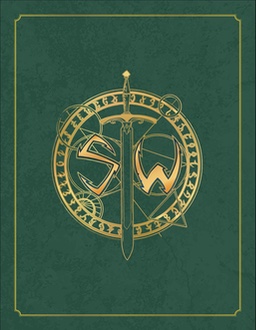
Swords & Wizardry Complete Revised has just completed its kickstarter. It's the same size book, 144 pages, but more usable pages: 140 vs 125 in Complete. This is because there's No Fucking Index. Complete's 2-page index wasn't the most useful thing ever, everything's listed in contents and reasonably organized, but occasionally I have to search in PDF instead of checking the index. SIGH, why, Matt? No kickstarter credits in new book, either.
Many places in the book now go from 2-column to 3-column layout, which can be helpful or too tight. It's fine for spells & monsters which have a lot of data fields, less great for species.
- Character Sheet: New sheet is a fillable form, many more boxes, but less aesthetic than the old one. In any case, I just use James V West's character sheets, many of which have single-save boxes. I will note, the new one lists AC from 0 to 9, instead of
9[10]to0[19]order & labelling. I really dislike that. -
Stats: Same as Complete. CHA does get a new use for follower morale.
-
Class: Cleric spell table remains in design error. Fighters now have a standard 15 save, BUT get a +1 bonus against all except spells, which is a little better balanced, more OD&D. Monks no longer have stat minimums, BUT most of their powers require higher stats, so an average-Joe Monk would have only minimal skills. There's no stat minimum for Paladin, except when a Fighter takes vows they need CHA 17, inconsistent.
Thieves remain up to 10d4 HD (while Assassins are up to 13d6!), but have a +2% chance to Climb Walls, Dwarf Thieves get a +15 on Traps, no +10 bonus on Pick Locks, finally this travesty is corrected! Must-buy for this change!
:)Seriously, all the classes are pretty close.There's an argument here "Why Would I Play a Fighter?" that Rangers & Paladins are not Fighters, so don't get Fighter STR bonuses, etc. I'd rather that it just went back to stat minumums, so you can't be one of these advanced classes unless you roll well. Especially this makes no sense for Paladins, who are JUST Fighters who've taken holy vows; why would they suddenly lose their fighting skills?
The non-Human species (now "Character Ancestry") are the same; this is a little disappointing since there was room to improve the class/levels permitted from long dialogues to clearer lists:
Dwarven player characters must be Fighters or Fighter-Thieves. Multi-classed Fight- er-Thieves are limited to 6th level as Fight- ers, and may not advance beyond this point. (For more information on multi-classed char- acters, see below.) A Dwarf who is purely a Fighter may advance beyond 6th level only if the warrior has Strength of 17 (maximum 7th level) or 18 (maximum 8th level). Such a Fighter may also take advantage of any XP bonus due to a high Strength score to gain experience more quickly.
Could be cleaned up to:
- Fighter (max Level 6th, 7th if STR 17, 8th if STR 18), Prime requisite bonus applies.
- Fighter/Thief (max Level 6th/unlimited)
- Movement: Encumbrance & movement has been changed, and now combat speed is faster, 60-120' per 1-minute round (Core was 3-12', Complete was 10-40'!), walking & running out-of-combat are still per 10-minute turn. Combat speed is now nearly plausible if you use a 10-second round, Usain Bolt did 100m in 10 seconds, so 1/3 rate for equipped normals is fine. The per-turn speeds are still nonsense, even with mapping it should be 10x or more. There's a collected movement chart here that is much clearer.
-
Combat: Morale rules have been added, and a morale stat to every monster. Now, here's the thing: It copies B/X (Basic/Expert, 1981) in using roll 2d6 under morale to save. OD&D almost always had roll high good, and Chainmail's morale system was roll 2d6 high over a number determined by troop type. I would have greatly preferred a standard d20 save with morale modifier per monster, or some such. But the presence of any morale rule and stat is helpful.
There's arguments, most recently on Wandering DMs, about the use of morale, but I think it's an essential tool, both as wargame simulation, where people in battle do sometimes just crap their pants and "Run away! Run away!"; and narratively as a way to avoid mass-murdering everyone you ever meet and fight.
There remain no rules for falling, disease, and minimal for fire and poison.
Healing has been reduced back to OD&D rate of 1 HP per 2 days, 4 weeks heals all. Death is at –1 HP, with an optional rule for survival to negative Level. Whoof. Since I don't use Clerics, that's not really practical.
-
Magic: Magic item creation is detailed, including the very popular rule from Holmes that Magic-Users and Clerics can write their own scrolls at 100 GP per Level, which makes a massive improvement to their quality of life. All new layout and a spell index, which since they're in alphabetical order I didn't really need. The page numbers could've been on the spell list instead!
-
Referee: Alas, the side-view dungeon & Rappan Athuk maps are gone, the dungeon from Complete is kept in 1-page dungeon form. Which is convenient for design, but less in depth for training new Referees.
A new system for generating random castles, inspired by OD&D Book 3, is very welcome. And there are stats for generic high-Level NPCs, with sometimes magical equipment, spell lists, etc.
A Referee Session Log ("control sheet" as I call them) is added, with fillable form fields, which may be very helpful to new Referees. There's no explanation of its use, but at least they can see how to organize information for a game. There's no time tracker on this one, I use a 6x24 chunk of graph paper in Turns for mine.
-
Monsters: Each monster now has Morale, Number Encountered, % in Lair (but I prefer
% is Liarfrom OD&D and Arduin), and a full stat line you can copy-paste out:Bugbear: HD 3+1; AC 5[14]; Atk bite (2d4) or weapon (1d8+1); Move 9; Save 14; Morale 9; AL C; CL/XP 4/120; Special: surprise opponents (1–3 on d6).
New monsters:
- Dinosaurs: Ankylosaurus, Brontosaurus, Triceratops, Tyrannosaurus Rex. They've always been 20% of the Clear encounters (Oof!), but weren't defined in previous editions.
- Horse finally gets full stats.
- Mammoth
- Night Hag
- Nightmare
- Otyugh
Designing monsters, there's new CL modifiers, EP values for CL 8+ have increased a bit, and the table goes up to 21+ now, more fairly rewarding very powerful monsters.
-
Treasure: System has been totally redesigned. You now roll on GP value tables, which give more specific coin & gem results, and many more of them have chances for magic items. At 4001-7000 GPV, you now have a 1/6 chance to get a major item, 1/6 to get a medium item, 2/6 to get a minor item. I'm not really gonna complain it's too rich now, but it's a big jump from 5%.
Intelligent weapons are at the same rate as Complete, but now there's actually rules for ego contests.
Items seem to be the same.
Book abruptly ends. So, the current license situation is there's no license ("all rights reserved"). There will be a Mythmere license very like the old OGL, or ORC with an SRD, or something, in the very near future, as a downloadable thing.
Conclusion
So this has been a long haul over a few days comparing PDFs until my eyes bleed out. I can't speak to the print book condition until I get it; my old blue book is in perfect (well, Very Good) condition after a decade of hard use, but printers are random.
There's several other retro-clones of OD&D, in particular Fantastic Medieval Campaigns which is VERY precise at copying warts and all of the original books, with minimal spackle over the rough spots. There's a lot, a kaiju-sized shitload, of B/X clones, which have a goofier, overpowered style, poorly adapted to swords & sorcery; I have played some Basic Fantasy lately and it was fine, very candy-coated Saturday morning D&D cartoon tone, but not a replacement.
Swords & Wizardry is much more eclectic and opinionated. It's also much more playable, more hackable, and more easily used as a "modern" RPG (I always air-quote that, but RPG design has moved on from Dave Arneson's game that Gary Gygax published & ripped off). There's still a lot of weird little gaps.
★★★★½ — S&W is a really great "dnd"-like to run, and Complete Revised is the best of these. I really dislike not having an index. I still need a booklet of house rules to play.
Covers: One last thing, the cover art over the editions is… not the best progression. I think the Core rules cover was the most D&D-like, an homage to the AD&D cover but grimmer. The Erol Otus blue book cover was fun, the electric demon and portal are eerie. The old city is meh, you can barely see the adventurers. The flying polyp thing is hideous. Giants are amateur. FMAG has gone thru many variants, they all look like (often are) clip art with airbrushing. The new edition comes in a green embossed cover, classy but boring, or a POD cover with maybe the most hideous art I've ever seen; only the teeny preview is available, and that's a blessing like Langford's Parrot basilisk.
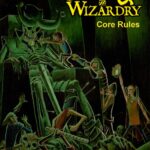
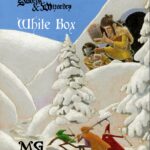
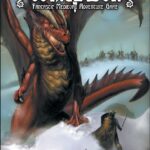
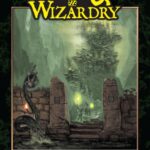
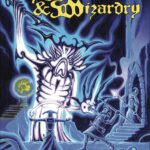
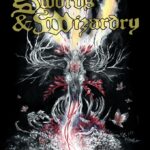
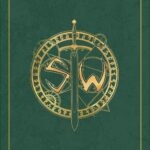

Very cool. A couple things:
Having discussed the reasoning behind the morale rules with Matt as they were bring drafted, his view (and I agreed) was that the change from the 2d6 roll-over method of Chainmail to B/X and BECMI's 2d6 roll-under one was effectively cosmetic and worth it for the increased compatibility alone. Gamers are much more likely to use these rules in conjunction with a B/X, BECMI, Labyrinth Lord, or OSE adventure than they are with Chainmail.
The method of scroll creation outlined in S&WCR is indeed the same one from the Holmes book, though it technically appeared first on page seven of Men & Magic. Pedantic, I know. 😉
Great review, though!
Men & Magic had scroll creation for Wizards (11th-Level), Holmes gave it to 1st-Level Mediums.
Ahh, that's right. Serves me right for not reading anything but the sample dungeon section in a while.